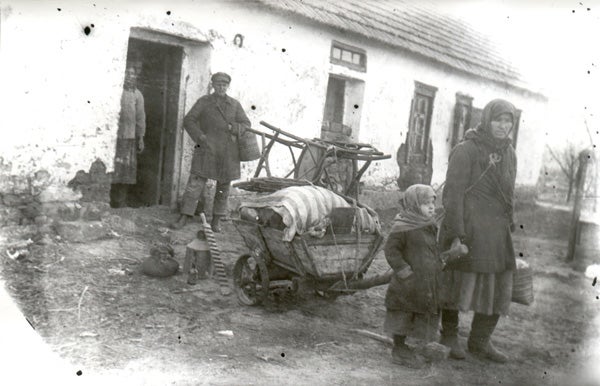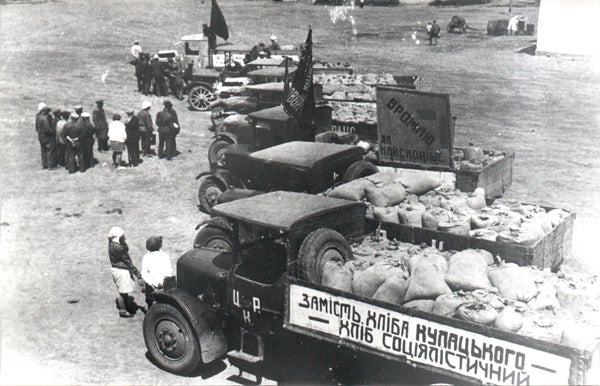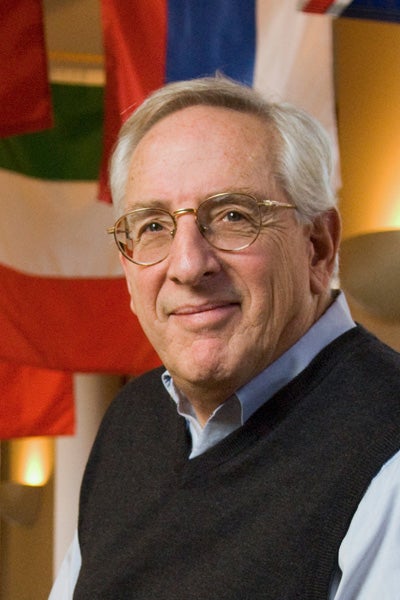Mass killing is still the way a lot of governments do business.
Go to the web site to view the video.
The past few decades have seen terrifying examples in Rwanda, Cambodia, Darfur, Bosnia.
Murder on a national scale, yes – but is it genocide? “The word carries a powerful punch,” said Stanford history Professor Norman Naimark. “In international courts, it’s considered the crime of crimes.”
Nations have tugs of war over the official definition of the word “genocide” itself – which mentions only national, ethnic, racial and religious groups. The definition can determine, after all, international relations, foreign aid and national morale. Look at the annual international tussle over whether the 1915 Turkish massacre and deportation of the Armenians “counts” as genocide.
Naimark, author of the controversial new book Stalin’s Genocides, argues that we need a much broader definition of genocide, one that includes nations killing social classes and political groups. His case in point: Stalin.
The book’s title is plural for a reason: He argues that the Soviet elimination of a social class, the kulaks (who were higher-income farmers), and the subsequent killer famine among all Ukrainian peasants – as well as the notorious 1937 order No. 00447 that called for the mass execution and exile of “socially harmful elements” as “enemies of the people” – were, in fact, genocide.
A dispossessed kulak and his family in front of their home in Udachne village in Donets’ka oblast, 1930s. (Image credit: Central State Archives of Photo, Audio, and Video Documents of Ukraine named after G. S. Pshenychnyi)
“I make the argument that these matters shouldn’t be seen as discrete episodes, but seen together,” said Naimark, the Robert and Florence McDonnell Professor of Eastern European Studies and a respected authority on the Soviet regime. “It’s a horrific case of genocide – the purposeful elimination of all or part of a social group, a political group.”
Stalin had nearly a million of his own citizens executed, beginning in the 1930s. Millions more fell victim to forced labor, deportation, famine, massacres, and detention and interrogation by Stalin’s henchmen.
“In some cases, a quota was established for the number to be executed, the number to be arrested,” said Naimark. “Some officials overfulfilled as a way of showing their exuberance.”
The term “genocide” was defined by the 1948 United Nations Convention on the Prevention and Punishment of the Crime of Genocide. The convention’s work was shaped by the Holocaust – “that was considered the genocide,” said Naimark.
“A catastrophe had just happened, and everyone was still thinking about the war that had just ended. This always occurs with international law – they outlaw what happened in the immediate past, not what’s going to happen in the future.”
In his book, he concludes that there was more similarity between Hitler and Stalin than usually acknowledged: “Both chewed up the lives of human beings in the name of a transformative vision of Utopia. Both destroyed their countries and societies, as well as vast numbers of people inside and outside their own states. Both, in the end, were genocidaires.”
Shipment of grain from the Chervonyi Step collective farm to a procurement center, Kyivs’ka oblast, 1932. The sign reads ‘Socialists’ bread instead of kulak’s bread.’ (Image credit: Central State Archives of Photo, Audio, and Video Documents of Ukraine named after G. S. Pshenychnyi)
All early drafts of the U.N. genocide convention included social and political groups in its definition. But one hand that wasn’t in the room guided the pen. The Soviet delegation vetoed any definition of genocide that might include the actions of its leader, Joseph Stalin. The Allies, exhausted by war, were loyal to their Soviet allies – to the detriment of subsequent generations.
Naimark argues that that the narrow definition of genocide is the dictator’s unacknowledged legacy to us today.
Accounts “gloss over the genocidal character of the Soviet regime in the 1930s, which killed systematically rather than episodically,” said Naimark. In the process of collectivization, for example, 30,000 kulaks were killed directly, mostly shot on the spot. About 2 million were forcibly deported to the Far North and Siberia.
They were called “enemies of the people,” as well as swine, dogs, cockroaches, scum, vermin, filth, garbage, half animals, apes. Activists promoted murderous slogans: “We will exile the kulak by the thousand when necessary – shoot the kulak breed.” “We will make soap of kulaks.” “Our class enemies must be wiped off the face of the earth.”
One Soviet report noted that gangs “drove the dekulakized naked in the streets, beat them, organized drinking bouts in their houses, shot over their heads, forced them to dig their own graves, undressed women and searched them, stole valuables, money, etc.”
The destruction of the kulak class triggered the Ukrainian famine, during which 3 million to 5 million peasants died of starvation.
“There is a great deal of evidence of government connivance in the circumstances that brought on the shortage of grain and bad harvests in the first place and made it impossible for Ukrainians to find food for their survival,” Naimark writes.
We will never know how many millions Stalin killed. “And yet somehow Stalin gets a pass,” Ian Frazier wrote in a recent New Yorker article about the gulags. “People know he was horrible, but he has not yet been declared horrible officially.”
Time magazine put Stalin on its cover 11 times. Russian public opinion polls still rank him near the top of the greatest leaders of Russian history, as if he were just another one of the powerful but bloodthirsty czars.
There’s a reason for Russian obliviousness. Every family had not only victims but perpetrators. “A vast network of state organizations had to be mobilized to seize and kill that many people,” Naimark wrote, estimating that tens of thousands were accomplices.
“How much can you move on? Can you put it in your past? How is a national identity formed when a central part of it is a crime?” Naimark asked. “The Germans have gone about it the right way,” he said, pointing out that the Germany has pioneered research about the Holocaust and the crimes of the Nazi regime. “Through denial and obfuscation, the Turks have gone about it the wrong way.”
Without a full examination of the past, Naimark observed, it’s too easy for it to happen again.
Toward the end of his life, Stalin may have had another genocide in his crosshairs. We’ll never know whether the concocted conspiracy of Jewish Kremlin doctors in 1952 would have resulted in the internal exile of the entire Jewish population. Whatever plans existed ended abruptly with Stalin’s death in March 1953, as rumors of Jewish deportations were swirling.
One of Stalin’s colleagues recalled the dictator reviewing an arrest list (really, a death list) and muttering to himself: “Who’s going to remember all this riff-raff in ten or twenty years’ time? No one. … Who remembers the names now of the boyars Ivan the Terrible got rid of? No one. … The people had to know he was getting rid of all his enemies. In the end, they all got what they deserved.”
Who remembers? If Naimark has his way, perhaps we all will: “Every family had people who died. I’m convinced that they need to learn about their own past. There’ll never be closure, but there will be a reckoning with the past.”
Media Contacts
Cynthia Haven, Stanford News Service: (650) 724-6184, cynthia.haven@stanford.edu


